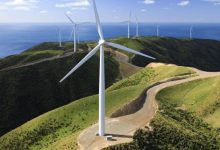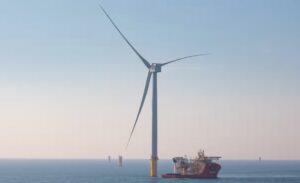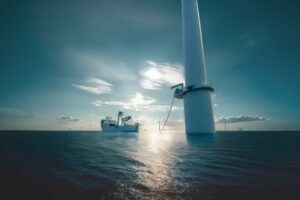Wind turbines in New Zealand pay back their lifecycle carbon emissions after just 1.5 years of operation, researchers from Victoria University in Wellington have found.
The researchers looked at data from a Hawkes Bay wind farm covering everything from making individual turbine parts, to transporting them into place, to decommissioning the entire windfarm, and compared that to combined cycle gas turbines.
To add insult to thermal injury, the researchers also found that it takes a wind turbine just six months to generate the equivalent of all of the energy required to make it, set it up, and take it down at the end of its life.
The payback period was calculated by looking at avoided emissions from grid electricity and from gas turbines, as in New Zealand onshore wind tends to displace energy generated by the former.
The new research used data from Meridian Energy’s under-construction Harapaki Wind Farm, which when finished will have 41 turbines and 176 megawatts (MW) of installed capacity.
It found that literature data consistently overestimates emissions created by civil works, and underestimates those during the transportation phase for onshore wind farm carbon footprints.
“The outcomes underscore the environmental efficiency of onshore wind farms and their important role in the energy transition. Notably, the manufacturing of wind turbines is the primary contributor to the carbon and energy footprints, highlighting a critical area for targeted environmental mitigation strategies,” the study says.
New Zealand has long been a big installer and user of wind energy since 1993 when deployment began. By 2023 installed capacity reached 1.3 gigawatt (GW) from 21 farms, with an average capacity factor across the country of 41 per cent – almost double the global average. These supply 12 per cent of the country’s power needs.
Another 2.2 GW of onshore generation is currently in different stages of planning and approvals, according to the New Zealand Wind Energy Association.
“Manufacturing wind turbines has been reported as the major contributor to greenhouse gas (GHG) emissions,” said the paper, published in the Journal Of The Royal Society Of New Zealand.
“However, the results in the literature for the carbon footprint of onshore wind plants vary from 3.3 to 70 gCO2eq/kWh, influenced by different factors such as technology employed, power plant capacity, turbine nominal capacity, site location, and temporal analysis resolution.”
The variations mean there’s little agreement on just how large a wind farm’s carbon footprint is, particularly since fewer Life Cycle Assessment studies have looked at the larger wind turbines now favoured by developers.
This paper delves into construction and recycling, two areas that previous studies have not tended to focus on.
“Both mechanical and chemical recycling methods show potential environmental benefits, reducing the overall wind farm GHG emissions from 10.8 (landfill) to 10.3 and 9.7 gCO2eq, respectively,” the paper says.
“However, it is crucial to note that these recycling technologies are not yet commercially feasible, and mechanical recycling presents the most mature option.”








